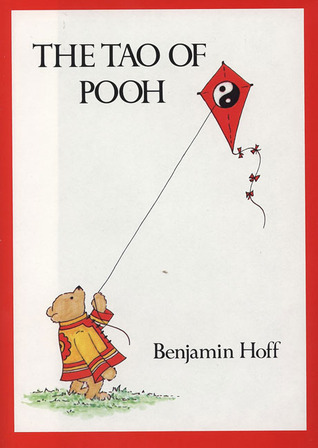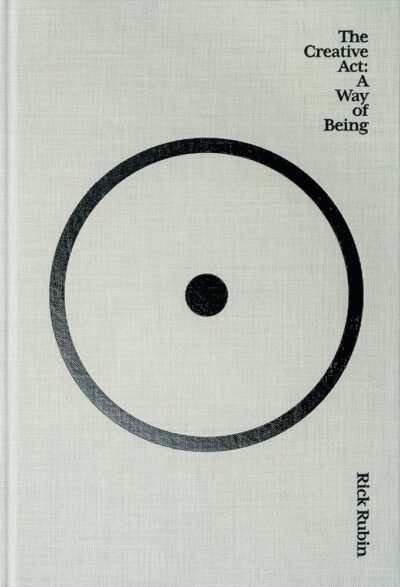182 Results with the "Philosophical" genre
Adventure Fiction (1164)
Biography (435)
Business & Finance (1)
Children's Literature (124)
Comics (6)
Culture (51)
Drama (123)
Dystopian (29)
Fable (86)
Fantasy (1132)
Fantasy (203)
Fiction (1010)
Finance (1)
Gothic Fiction (12)
Historical Fiction (615)
History (122)
Horror (56)
Lifestyle (36)
Literary (404)
Literary Fiction (207)
Memoir (113)
Mystery (422)
Non-fiction (87)
Novel (549)
Paranormal Fiction (96)
Philosophy (45)
Poetry (249)
Political Fiction (14)
Politics (42)
Practical (32)
Psychological (4)
Psychological Thriller (108)
Relationship (6)
Romance Novel (716)
Romantic Melodrama (14)
Satire (91)
Science (46)
Science Fiction (345)
Self-help (68)
Society (65)
Society (2)
Spiritual Growth (1)
story (2)
Thriller (704)
True Crime (56)
view (11)
Women's Fiction (2)
Young Adult (233)
-
Chapter
Chapter 2: The How of Pooh?
 Chapter 2: The How of Pooh? In this chapter, Hoff introduces Pooh to the concept of Taoism, a philosophy many people are not familiar with. Hoff believes the best way to start understanding Taoism is by exploring its roots in China. To help explain this, Hoff and Pooh imagine themselves walking through a Chinese city, where they encounter a calligraphy shop. The shopkeeper presents them with a painted scroll called "The Vinegar Tasters." This scroll features three figures—Confucius, Buddha, and…
Chapter 2: The How of Pooh? In this chapter, Hoff introduces Pooh to the concept of Taoism, a philosophy many people are not familiar with. Hoff believes the best way to start understanding Taoism is by exploring its roots in China. To help explain this, Hoff and Pooh imagine themselves walking through a Chinese city, where they encounter a calligraphy shop. The shopkeeper presents them with a painted scroll called "The Vinegar Tasters." This scroll features three figures—Confucius, Buddha, and…-
68.0 K • Ongoing
-
-
Chapter
Chapter 11: Backword
 Chapter 11: Backword begins with Hoff asking Pooh what he thinks about The Tao of Pooh. Pooh, as usual, doesn’t quite grasp what Hoff is referring to. He isn’t thinking about philosophy, concepts, or teachings. He’s simply being present—more focused on the moment than on summarizing a book. Hoff reminds him of P’u, the Uncarved Block, and Wu Wei, the effortless way of being. Pooh listens politely, and in his own simple, wise way, responds with a song. It’s about doing what’s in front of you,…
Chapter 11: Backword begins with Hoff asking Pooh what he thinks about The Tao of Pooh. Pooh, as usual, doesn’t quite grasp what Hoff is referring to. He isn’t thinking about philosophy, concepts, or teachings. He’s simply being present—more focused on the moment than on summarizing a book. Hoff reminds him of P’u, the Uncarved Block, and Wu Wei, the effortless way of being. Pooh listens politely, and in his own simple, wise way, responds with a song. It’s about doing what’s in front of you,…-
68.0 K • Ongoing
-
-
 The Vinegar Tasters offers a playful yet insightful introduction to the Taoist philosophy through a whimsical dialogue between the narrator and Pooh. As Pooh expresses curiosity about Taoism, which he has heard of but doesn’t fully understand, the narrator crafts an imaginative journey to China to clarify this concept. They find themselves in a small shop full of allegorical scrolls and stumble upon a painting titled "The Vinegar Tasters." This artwork features three significant figures—Confucius,…
The Vinegar Tasters offers a playful yet insightful introduction to the Taoist philosophy through a whimsical dialogue between the narrator and Pooh. As Pooh expresses curiosity about Taoism, which he has heard of but doesn’t fully understand, the narrator crafts an imaginative journey to China to clarify this concept. They find themselves in a small shop full of allegorical scrolls and stumble upon a painting titled "The Vinegar Tasters." This artwork features three significant figures—Confucius,…-
68.0 K • Ongoing
-
-
Chapter
Chapter 12: Pooh?
 Pooh? In this chapter, the narrator and Pooh have an engaging and lighthearted conversation about Taoist philosophy, focusing specifically on the concept of P'u, or the Uncarved Block. The narrator explains that many people are unfamiliar with Taoism, leading to the idea of embarking on a whimsical journey to China to understand the philosophy better. In a quaint shop filled with allegorical scrolls, they come across a painting titled "The Vinegar Tasters," which becomes a central point for the…
Pooh? In this chapter, the narrator and Pooh have an engaging and lighthearted conversation about Taoist philosophy, focusing specifically on the concept of P'u, or the Uncarved Block. The narrator explains that many people are unfamiliar with Taoism, leading to the idea of embarking on a whimsical journey to China to understand the philosophy better. In a quaint shop filled with allegorical scrolls, they come across a painting titled "The Vinegar Tasters," which becomes a central point for the…-
68.0 K • Ongoing
-
-
Chapter
About the Author
 The Tao of Pooh begins with the author, Benjamin Hoff, offering a glimpse into his life, personality, and interests. Hoff, a writer from Oregon, describes himself as someone with a diverse range of passions, including writing, photography, music, and composing. He expresses a deep appreciation for nature, particularly forests and bears, and humorously reflects on his academic history, noting his degree in Asian Art but acknowledging that he hasn’t confirmed the specifics in quite some time. This…
The Tao of Pooh begins with the author, Benjamin Hoff, offering a glimpse into his life, personality, and interests. Hoff, a writer from Oregon, describes himself as someone with a diverse range of passions, including writing, photography, music, and composing. He expresses a deep appreciation for nature, particularly forests and bears, and humorously reflects on his academic history, noting his degree in Asian Art but acknowledging that he hasn’t confirmed the specifics in quite some time. This…-
68.0 K • Ongoing
-
-
Chapter
Chapter 1: Foreword
 Foreword: The journey of writing often begins not with a grand plan, but with a curious spark. When Pooh notices Benjamin Hoff writing, his innocent interruption becomes the foundation of something greater. Hoff, trying to explain his book, declares it’s about staying peaceful and content no matter what. Pooh, with his usual calm demeanor, challenges this idea not by argument, but with a simple question—whether Hoff has truly understood the lessons he’s writing about. That question hits deeper than…
Foreword: The journey of writing often begins not with a grand plan, but with a curious spark. When Pooh notices Benjamin Hoff writing, his innocent interruption becomes the foundation of something greater. Hoff, trying to explain his book, declares it’s about staying peaceful and content no matter what. Pooh, with his usual calm demeanor, challenges this idea not by argument, but with a simple question—whether Hoff has truly understood the lessons he’s writing about. That question hits deeper than…-
68.0 K • Ongoing
-
-
Chapter
Chapter 10: The Now of Pooh
 Chapter 10: The Now of Pooh, Hoff reflects on why people, particularly the young, follow Pooh, a bear often described as having “a Little Brain,” on his adventures in the Hundred Acre Wood. He questions whether following one’s brain is truly the right approach, or whether it’s better to listen to "the voice within." Hoff argues that the brain, though valuable for many tasks, fails to grasp the most important aspects of life. Intelligence and cleverness can often distance people from the world…
Chapter 10: The Now of Pooh, Hoff reflects on why people, particularly the young, follow Pooh, a bear often described as having “a Little Brain,” on his adventures in the Hundred Acre Wood. He questions whether following one’s brain is truly the right approach, or whether it’s better to listen to "the voice within." Hoff argues that the brain, though valuable for many tasks, fails to grasp the most important aspects of life. Intelligence and cleverness can often distance people from the world…-
68.0 K • Ongoing
-
-
Story
The Tao of Pooh
 The Tao of Pooh by Benjamin Hoff uses Winnie the Pooh to explain Taoism, showing how simplicity and harmony lead to peace and contentment.
The Tao of Pooh by Benjamin Hoff uses Winnie the Pooh to explain Taoism, showing how simplicity and harmony lead to peace and contentment.-
4.5 K • Jan 24, '25
-
4.9 K • Jan 24, '25
-
4.2 K • Jan 24, '25
-
-
Chapter
What We Tell Ourselves
 The chapter titled What We Tell Ourselves delves into the profound self-reflection that artists experience in their creative journeys. It examines how the stories artists tell themselves about their identity and their work often serve as distractions, masking the deeper truths of their creations. These narratives, while comforting, fail to capture the authentic essence of the art itself or the impact it has on the world, emphasizing that the true value lies in the work produced rather than the tales…
The chapter titled What We Tell Ourselves delves into the profound self-reflection that artists experience in their creative journeys. It examines how the stories artists tell themselves about their identity and their work often serve as distractions, masking the deeper truths of their creations. These narratives, while comforting, fail to capture the authentic essence of the art itself or the impact it has on the world, emphasizing that the true value lies in the work produced rather than the tales…-
341.4 K • Ongoing
-
-
Chapter
Harmony
 The concept of harmony is deeply ingrained in the natural world, revealing itself through mathematical ratios that govern the universe’s most mesmerizing patterns. From the swirling arms of distant galaxies to the delicate symmetry of human features, these proportional relationships evoke a sense of order and aesthetic appeal. This intrinsic balance is the foundation of some of humanity’s most revered artistic and architectural marvels, such as the Parthenon’s classical proportions and Beethoven’s…
The concept of harmony is deeply ingrained in the natural world, revealing itself through mathematical ratios that govern the universe’s most mesmerizing patterns. From the swirling arms of distant galaxies to the delicate symmetry of human features, these proportional relationships evoke a sense of order and aesthetic appeal. This intrinsic balance is the foundation of some of humanity’s most revered artistic and architectural marvels, such as the Parthenon’s classical proportions and Beethoven’s…-
341.4 K • Ongoing
-
- Previous 1 2 3 … 19 Next
